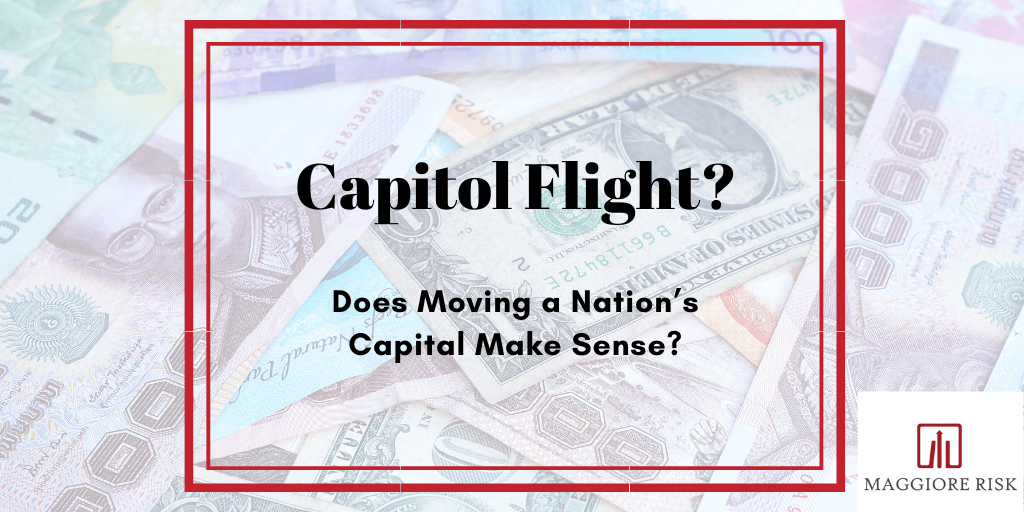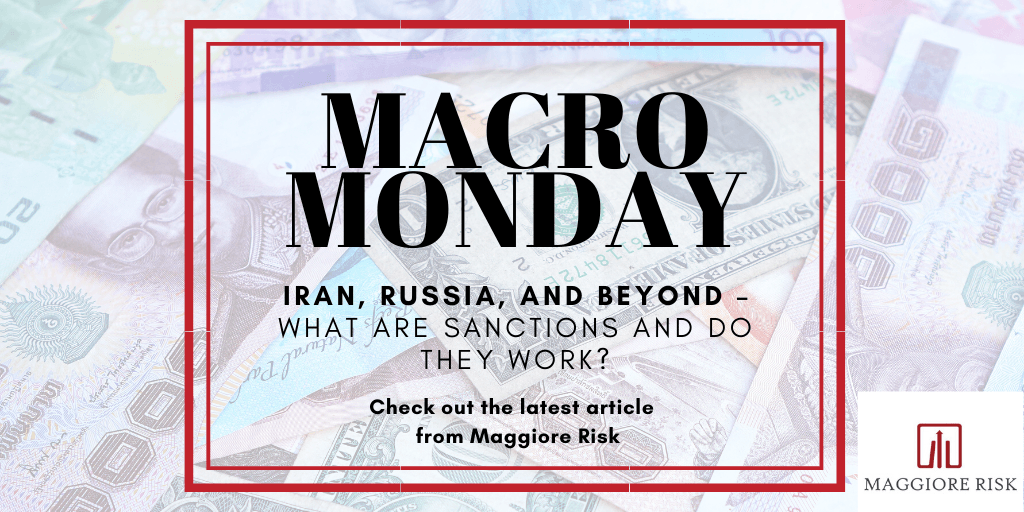The National Association of REALTORS International Investment Report - The Sky is Not Falling
The large decline in inbound real estate investment is alarming, but there are global and country-specific reasons for the decline.
The National Association of REALTORS® has released their annual Profile of International Transactions in U.S. Residential Real Estate , and the numbers appear grim. Very grim. International investment in U.S. residential real estate is down 36% from 2017-2018, and a whopping 49% from the all-time record set in 2016-2017. Every single nation in the top 5 nations (China, Canada, India, UK, and Mexico) invested less than last year. It is clearly time to panic, right?
Probably not. While such a large decline is not great news, the health of the U.S. real estate market and global economic conditions are contributing to the decline, as are factors specific to each nation. Each of the issues leading to the decline provides some cause for concern and collectively form the perfect storm for foreign investment in U.S. real estate this past year; but there is no reason to panic, and every reason to believe that residential properties in the U.S. will continue to sell, either to domestic or foreign buyers.
The National Association of REALTORS® reports that foreign buyers purchased $77.9 billion worth of properties in the United States between April 2018 and March 2019. This is a 36% decline from the $121 billion in sales the previous year, and a 49% decline from April 2016-March 2017 figures. The top 5 nations account for 44% of purchases, continuing a gradual decline that saw them account for 49% last year after making up 79% of foreign purchasers in the first survey in 2010. The 183,000 total properties purchased by foreign buyers sound like quite a bit; but they only comprise 3% of all purchases (they also account for 5% of all sales since foreign buyers purchase slightly more expensive homes than the average domestic purchaser.) The upshot of the report is that there is a more geographically diverse batch of foreigners buying fewer homes than previous years for more per home than domestic buyers.
But WHY are there fewer foreign buyers? Aren’t we in a globalized economy where the best and brightest are attracted to the nation with the most lucrative opportunities? Yes; but we are still in an economy with all of its starts and stops. Economic growth has slowed globally, with China slowing from 6.9% to 6.4%, and Latin America, Canada, and Europe all growing at a rate below 2%. We also still live in a political world where leaders’ actions influence investment decisions. President Donald Trump’s trade wars have cooled foreign direct investment inflow into the United States from $420 billion in 2015 to $297 billion in 2018. Foreign companies are unwilling to expand in the uncertain environment, and thus they will not be sending their employees who would need homes to the United States. Additionally, the U.S. housing supply has remained tight at 4.2 months, which nudged prices upwards and, when combined with the strengthening of the dollar, makes homes a little less affordable for foreign buyers.
The country whose citizens invest the most in United States residential real estate is also the most interesting because it invested less than half what it did last year and still remained number one. Chinese purchases of $13.4 billion are 56% less than the $30.4 billion invested last year; but are still enough to remain the largest investor in U.S. real estate by over $5 billion. How could Chinese investment drop so precipitously in only one year? In addition to the cooling Chinese economy and strengthening dollar, a few other factors are decreasing Chinese participation. First and most obviously, as mentioned above, the trade war between the countries dampens expansion plans going both directions and lessens the need for Chinese workers to either establish their companies’ operations in the U.S. or come to the U.S. to learn their new American employers’ operations before taking the knowledge back to China. Second, to cope with a weakening economy and currency, China implemented more stringent capital controls that made moving money to buy a home extremely difficult. Third, China’s big foreign policy and business strategy is their Belt and Road Initiative which seeks to build a network of roads and ports between China and Europe and Africa to more efficiently transport goods. It makes sense that potential Chinese buyers of U.S. properties might now buy an apartment in Venice instead of a penthouse in San Francisco since future business is much more certain. Finally, China’s domestic real estate market is slowing down, lowering prices and providing better investment opportunities than the previous few years without the hassle of navigating capital controls.
Canada remained the second-largest aggregate investor in U.S. residential real estate, purchasing $8.0 billion worth of property, down 24% from the $10.5 billion purchased last year and $19.0 billion purchased in 2017. The biggest culprit here is probably Canada’s weak dollar. The NAR report indicates that a purchase cost a Canadian 6% more this year than last. Another factor keeping Canadians out of the U.S. market are better opportunities in their own market. Canadian real estate has been scorching hot the past decade with many foreign investors racing in to snatch up properties in the cities and resort towns. However, to avoid a popping bubble, several cities have imposed a tax on foreigners purchasing property to keep speculators out. This has had the desired impact thus far as prices are growing at a slower rate and foreign buyers are not buying in the same numbers. With less foreign competition, Canadian buyers can get better deals without the concern of the unfavorable exchange rate that comes with purchasing in the U.S. Finally, as with China, trade concerns have likely hampered cross-border moves until more certainty can be achieved.
The third largest country of investment, India, is unique in that the amount invested by Indian purchasers has remained relatively consistent since the survey began in 2010. There have been a few high and low outliers, but 2019’s $6.9 billion is only 4% lower than last year’s $7.2 billion with the number of homes purchased actually increasing despite a property costing 13% more for Indian buyers than last year as a result of the Rupee losing ground versus the dollar. This consistency indicates that the United States is still a destination of choice for Indian workers and investors.
Citizens of the United Kingdom invested the fourth most in the U.S. real estate market; but decreased the amount invested by 48% from $7.3 billion to $3.8 billion. Of course, Brexit dominates all discussion of UK economics, including here. It has driven the Pound down from a range of $1.49/₤1-$1.39/₤1 in the year before the Brexit vote to a range of $1.42/₤1-$1.24/₤1 in the past year. Additionally, foreign direct investment in the UK has plummeted. The most recent report of Parliament covers the years 2016 and 2017 and states that FDI going into the UK dropped from ₤192.0 billion in 2016 to ₤92.4 in 2017. As with a decrease in trade, this decrease in FDI means that fewer companies are sending employees to the UK and pulling employees from the UK. Finally, it is probable that those with the means to purchase property abroad in anticipation of Brexit have already done so. UK purchases in the U.S. rose from $5.5 billion in 2016 to $9.6 billion in 2017, the year after the Brexit vote. They remained historically high at $7.3 billion in 2018 before being cut almost in half this year. Thus, the evidence indicates that those who were considering a purchase around the time of the Brexit vote may have accelerated their timelines and purchased earlier than planned.
Finally, Mexican buyers decreased their U.S. purchases by 45% but remained the fifth largest aggregate investor in U.S. property. The $2.3 billion spent is less than a quarter of the $9.6 billion worth of purchases in 2017. The biggest cause is likely the weak peso, with a home in the U.S. costing Mexican purchasers 9% more than last year. Mexico also suffers from trade uncertainty, with companies waiting for finalization of a new NAFTA deal before committing to expansion. Regardless of the reason for the decrease, geography dictates that Mexican and American buyers will consistently purchase in each other’s nations when the markets are right, so it is safe to assume Mexican purchases will increase in due time.
The National Association of REALTORS® report does not indicate the death of U.S. property as a popular investment for foreigners, nor does it signal some gathering storm preparing to devastate the market. Properties are selling. Prices are increasing. The nationalities of the purchasers do not matter one bit. It is troubling that all of the factors discussed above aligned to create such a large decrease in purchases, and significant attention should be paid to determining which factors are structural and which are simply deviations from the norm. But the impact of a strong U.S. economy, real estate market, and dollar have magnified the effect of these foreign factors, and there is no reason to believe that foreign buyer won’t return in record numbers when market conditions are more favorable. So watch the skies but put away the umbrella. The sky is not falling on the U.S. residential real estate market.











